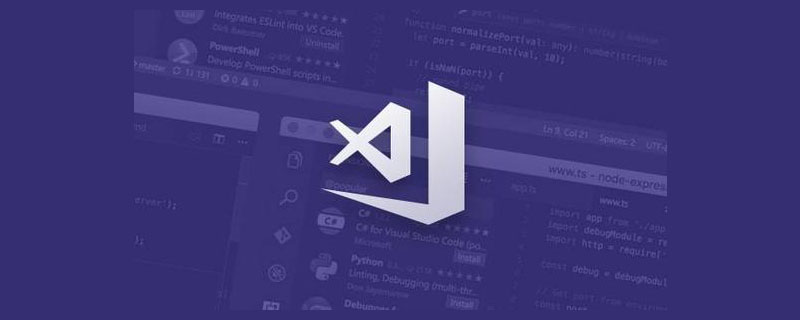在bootstrap模態(tài)框中動態(tài)加載內(nèi)容可以通過JavaScript和ajax實(shí)現(xiàn)。1)在模態(tài)框顯示時,使用javascript監(jiān)聽show.bs.modal事件。2)通過ajax的load方法從服務(wù)器獲取html片段并填充到模態(tài)框的modal-body中。這種方法可以異步加載內(nèi)容,提升用戶體驗(yàn)。

引言
在現(xiàn)代Web開發(fā)中,bootstrap的模態(tài)框(Modal)是一個非常受歡迎的組件,用于展示對話框、彈出窗口等。今天我們要探討的是如何在Bootstrap模態(tài)框中動態(tài)加載內(nèi)容,這對于提升用戶體驗(yàn)和實(shí)現(xiàn)復(fù)雜的交互邏輯至關(guān)重要。通過這篇文章,你將學(xué)會如何利用JavaScript和AJAX技術(shù)來實(shí)現(xiàn)這一功能,并了解一些常見的陷阱和最佳實(shí)踐。
基礎(chǔ)知識回顧
Bootstrap是一個強(qiáng)大的前端框架,它提供了豐富的ui組件,其中模態(tài)框是常用的一個。模態(tài)框可以用來展示信息、表單、圖片等內(nèi)容。動態(tài)加載內(nèi)容意味著我們可以在用戶觸發(fā)模態(tài)框時,從服務(wù)器獲取數(shù)據(jù)并填充到模態(tài)框中,這需要JavaScript和AJAX的支持。
核心概念或功能解析
動態(tài)內(nèi)容加載的定義與作用
動態(tài)內(nèi)容加載指的是在用戶交互時,通過JavaScript和AJAX從服務(wù)器獲取數(shù)據(jù),并將這些數(shù)據(jù)填充到模態(tài)框中。這種方法可以讓頁面更加靈活和響應(yīng)迅速,提升用戶體驗(yàn)。例如,當(dāng)用戶點(diǎn)擊一個按鈕時,模態(tài)框可以展示最新的數(shù)據(jù),而不需要刷新整個頁面。
讓我們看一個簡單的例子:
<!-- HTML 結(jié)構(gòu) --> <button type="button" class="btn btn-primary" data-toggle="modal" data-target="#myModal"> 打開模態(tài)框 </button> <div class="modal fade" id="myModal" tabindex="-1" role="dialog" aria-labelledby="myModalLabel" aria-hidden="true"> <div class="modal-dialog" role="document"> <div class="modal-content"> <div class="modal-header"> <h5 class="modal-title" id="myModalLabel">模態(tài)框標(biāo)題</h5> <button type="button" class="close" data-dismiss="modal" aria-label="Close"> <span aria-hidden="true">×</span> </button> </div> <div class="modal-body"> <!-- 這里將動態(tài)加載內(nèi)容 --> </div> </div> </div> </div>
// JavaScript 代碼 $('#myModal').on('show.bs.modal', function (event) { var button = $(event.relatedTarget) // 觸發(fā)模態(tài)框的按鈕 var recipient = button.data('whatever') // 從按鈕中提取信息 var modal = $(this) modal.find('.modal-title').text('新消息給 ' + recipient) modal.find('.modal-body').load('ajax/test.html') // 動態(tài)加載內(nèi)容 })
工作原理
當(dāng)用戶點(diǎn)擊按鈕時,Bootstrap會觸發(fā)show.bs.modal事件,我們可以在這個事件中執(zhí)行JavaScript代碼來動態(tài)加載內(nèi)容。通過load方法,我們可以從服務(wù)器獲取HTML片段并填充到模態(tài)框的modal-body中。
這種方法的優(yōu)點(diǎn)在于它可以異步加載內(nèi)容,不會阻塞用戶界面,但需要注意的是,過多的AJAX請求可能會影響性能。此外,確保服務(wù)器返回的HTML片段是安全的,防止xss攻擊。
使用示例
基本用法
讓我們看一個更具體的例子,假設(shè)我們有一個用戶列表,每個用戶都可以點(diǎn)擊查看詳細(xì)信息:
<!-- HTML 結(jié)構(gòu) --> <button type="button" class="btn btn-primary user-detail" data-user-id="1"> 查看用戶1詳細(xì)信息 </button> <div class="modal fade" id="userDetailModal" tabindex="-1" role="dialog" aria-labelledby="userDetailModalLabel" aria-hidden="true"> <div class="modal-dialog" role="document"> <div class="modal-content"> <div class="modal-header"> <h5 class="modal-title" id="userDetailModalLabel">用戶詳細(xì)信息</h5> <button type="button" class="close" data-dismiss="modal" aria-label="Close"> <span aria-hidden="true">×</span> </button> </div> <div class="modal-body"> <!-- 這里將動態(tài)加載用戶詳細(xì)信息 --> </div> </div> </div> </div>
// JavaScript 代碼 $('.user-detail').on('click', function() { var userId = $(this).data('user-id'); $('#userDetailModal').modal('show'); $('#userDetailModal .modal-body').load('user-detail.php?id=' + userId); });
在這個例子中,當(dāng)用戶點(diǎn)擊按鈕時,我們會獲取用戶ID,并通過AJAX請求從服務(wù)器獲取用戶詳細(xì)信息,然后填充到模態(tài)框中。
高級用法
有時候,我們可能需要在模態(tài)框中加載更復(fù)雜的內(nèi)容,比如表單或圖表。讓我們看一個更復(fù)雜的例子:
<!-- HTML 結(jié)構(gòu) --> <button type="button" class="btn btn-primary edit-user" data-user-id="1"> 編輯用戶1信息 </button> <div class="modal fade" id="editUserModal" tabindex="-1" role="dialog" aria-labelledby="editUserModalLabel" aria-hidden="true"> <div class="modal-dialog" role="document"> <div class="modal-content"> <div class="modal-header"> <h5 class="modal-title" id="editUserModalLabel">編輯用戶信息</h5> <button type="button" class="close" data-dismiss="modal" aria-label="Close"> <span aria-hidden="true">×</span> </button> </div> <div class="modal-body"> <!-- 這里將動態(tài)加載用戶編輯表單 --> </div> <div class="modal-footer"> <button type="button" class="btn btn-secondary" data-dismiss="modal">取消</button> <button type="button" class="btn btn-primary save-user">保存</button> </div> </div> </div> </div>
// JavaScript 代碼 $('.edit-user').on('click', function() { var userId = $(this).data('user-id'); $('#editUserModal').modal('show'); $.ajax({ url: 'user-edit-form.php?id=' + userId, success: function(data) { $('#editUserModal .modal-body').html(data); // 初始化表單驗(yàn)證等邏輯 initFormValidation(); } }); }); // 保存用戶信息 $('#editUserModal').on('click', '.save-user', function() { var formData = $('#editUserModal form').serialize(); $.ajax({ url: 'save-user.php', type: 'POST', data: formData, success: function(response) { if (response.success) { alert('用戶信息保存成功'); $('#editUserModal').modal('hide'); } else { alert('保存失敗:' + response.error); } } }); }); // 初始化表單驗(yàn)證 function initFormValidation() { // 這里添加表單驗(yàn)證邏輯 }
在這個高級用法中,我們不僅動態(tài)加載了用戶編輯表單,還添加了保存用戶信息的功能。這展示了如何在模態(tài)框中實(shí)現(xiàn)更復(fù)雜的交互邏輯。
常見錯誤與調(diào)試技巧
在使用動態(tài)內(nèi)容加載時,常見的錯誤包括:
-
內(nèi)容加載失敗:確保服務(wù)器返回的HTML片段是正確的,并且沒有網(wǎng)絡(luò)錯誤。可以使用瀏覽器的開發(fā)者工具查看網(wǎng)絡(luò)請求和響應(yīng)。
-
模態(tài)框內(nèi)容未更新:有時候模態(tài)框的內(nèi)容可能不會更新,這是因?yàn)锽ootstrap的緩存機(jī)制。可以嘗試在加載新內(nèi)容前清空模態(tài)框內(nèi)容:
$('#myModal .modal-body').empty().load('ajax/test.html'); -
事件綁定問題:在動態(tài)加載內(nèi)容后,事件可能不會綁定到新加載的元素上。可以使用事件委托來解決這個問題:
$('#myModal').on('click', '.save-user', function() { // 事件處理邏輯 });
性能優(yōu)化與最佳實(shí)踐
在實(shí)際應(yīng)用中,動態(tài)內(nèi)容加載的性能優(yōu)化非常重要。以下是一些建議:
-
緩存:如果內(nèi)容不會頻繁變化,可以考慮緩存服務(wù)器返回的內(nèi)容,減少不必要的AJAX請求。
-
代碼可讀性:確保JavaScript代碼的可讀性和維護(hù)性,使用注釋和適當(dāng)?shù)拿?guī)范。
-
錯誤處理:在AJAX請求中添加錯誤處理邏輯,確保用戶在內(nèi)容加載失敗時得到友好的提示。
-
安全性:確保從服務(wù)器獲取的內(nèi)容是安全的,防止XSS攻擊。可以使用$.ajax的dataType: ‘html’選項(xiàng),并確保服務(wù)器返回的內(nèi)容是經(jīng)過適當(dāng)處理的。
通過這些方法和實(shí)踐,你可以更有效地在Bootstrap模態(tài)框中實(shí)現(xiàn)動態(tài)內(nèi)容加載,提升用戶體驗(yàn)和應(yīng)用性能。
.jpg)
















.png)
